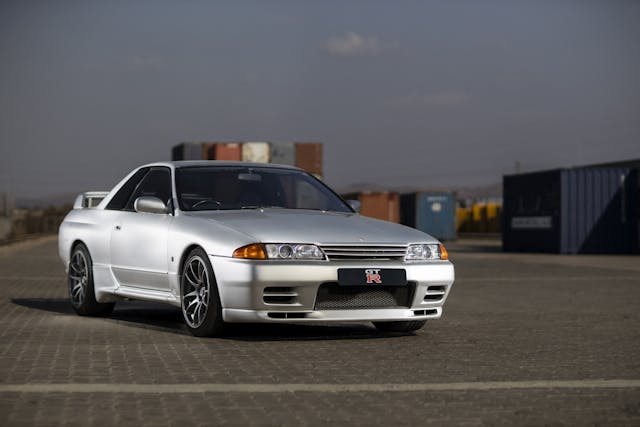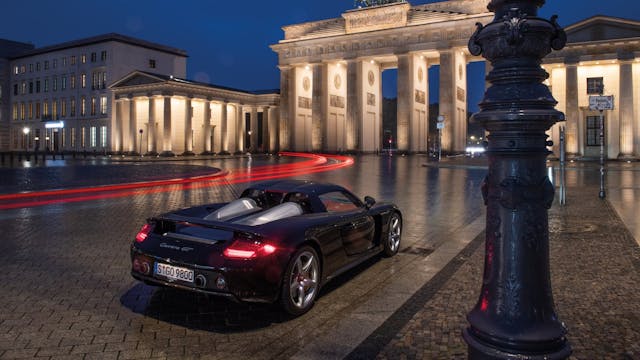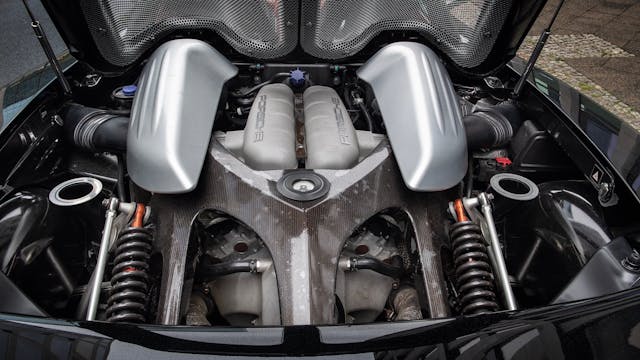2022’s stand-out collector-vehicle segments
If you own a motorized vehicle, chances are it’s worth more right now than it was this time last year. That, in a nutshell, is the story of 2022—widespread appreciation mixed in with inflation. Yet even in a year when practically everything gained, there were some hits and misses. Here are segments that stood out to us in 2022.
We thought 4x4s couldn’t get hotter … and they didn’t

Old-school 4x4s were hot even way back in 2018–19, when the rest of the market was flat. Then came the pandemic, and owning a fun classic that could in a pinch carry your entire family through a post-apocalyptic landscape understandably became highly fashionable. By the end of 2021, six-figure Broncos were commonplace at big auctions.
Perhaps it was inevitable that these vintage trucks would regress toward the mean. Average #2 (Excellent) condition values for first-gen Broncos, as of the third quarter of 2022, are down 12 percent since the start of the year. The same is true for values of Toyota’s venerable FJ40. Squarebody Blazers and Jimmys fared a bit better, with their values only slipping nine percent since January.
That hardly means collectors are over the whole truck thing. Rather, we suspect many would-be Bronco buyers are realizing that America has no shortage of cool old trucks, from 1990s GM pickups to nearly modern Toyota FJ Cruisers.
The sky’s the limit for Skylines

The shorthand description of Skyline GT-Rs for the uninitiated is “Japan’s Porsche 911.” Built in three generations between 1989 and 2002, Skylines carry just as much racing heritage, engineering prowess, and trickle-down street appeal.
The analogy also applies to their collectibility. Skylines have in this decade done what air-cooled 911s did in the previous one—transition from neat old sports cars coveted by in-the-know enthusiasts to a hugely valuable classic. During 2022 in particular, Skylines garnered attention from a broader audience, including those who might not consider themselves hardcore JDM collectors. However, speculative sellers are learning quickly—sometimes, painfully—that the customer base for Skylines is highly educated. These buyers have a keen eye for spotting repairs and modifications; devoted and deep pocketed though some may be, they expect transparency.
Values for the R32 generation Skyline GT-R skyrocketed 60 percent since the beginning of 2022, and race-bred, lighter-weight specials like the NISMO and N1 variants were a big factor in that. Their trajectory has boosted cars with less factory fettling, too: Standard GT-Rs gained 30 percent. In the bigger picture, the same money that three or four years ago would have gotten you a decent GT-R would, in 2022, land you a bad car with issues.
The two later generations of GT-R, produced between 1995 and 2002, are only beginning to qualify for U.S. import under NHTSA regulations, and their status as previously forbidden fruit may be pushing values higher. Values for U.S.-legal R34s increased by 37 percent in 2022, while R33s went up 13 percent. Meanwhile, the younger collectors who most frequently pine for these cars are steadily becoming more active in the market.
All to say, as big as the last 12 months were for Skylines, the best is likely yet to come.
Analog supercars

Manual transmission, mid-mounted engine, little to no electronic “nanny” systems—high-performance coupes with this trifecta had a big year.
Most are poster cars of the ’90s and early 2000s: Ferrari’s wedgy, V-8-powered F40, Bugatti’s V-12 EB110, Porsche’s V-10 Carrera GT, Lamborghini’s Countach. As their 21st-century counterparts grow ever more complex—though this often means they’re tamer to drive—these turn-of-the-century models are seen as purer, harder-core. Many of these “analog” supercars don’t have ABS or stability control, let alone the emissions-friendly hybrid systems now mandatory for traversing Europe’s low-emissions zones.
Just six days into 2022, a 2005 Carrera GT smashed Bring a Trailer’s sale record with a $1.907M result. That followed a year in which the model set three successive auction records. The V-10 monster ended the year with a 25 percent average increase, with #2 condition values sitting at $1.5M, up from $1.2M.

Just last week, we saw a new world-record price for a Ferrari F50, which was sold by RM Sotheby’s in Miami Beach, Florida: $5.395M. The result capped a 23 percent increase in average value for the F50, with #2 condition cars leaping from an average value of $3.5M to $4.3M. Its predecessor, the F40, didn’t need to set a world record to have a poppin’ year: #2 values for Ferrari’s first 200-mph production car went from $2.35M to an even $3M.
Minimalist performance appeal … used to maximum effect?
Muscle cars

2022 for muscle cars was, in a word, “confusing.”
Old-school American muscle saw a big ramp-up following the January auctions, shooting to heights it hadn’t seen since 2008. However, through the rest of the year, values for many models began to creep down. Values of first-generation Pontiac GTOs, for instance, shot up 30 percent in the early months of 2022 but slipped mid-year. The cars are still are closing the year with a net gain of 15 percent, showcasing a trend: of the muscle cars that posted gains in 2022, most have seen a subsequent dip but finished the year above where they started. Their spikes in value are simply not as aggressive—or as widespread—as January suggested.
Mopar brands are generally faring better than Ford and Chevy, but the gains we’re seeing are isolated. For example, 383-powered Challenger R/Ts and ’Cudas are on the upswing. These mid-level performance models aren’t equal in value to their top-dog, 440- or Hemi-packing brethren, but the gap is much narrower than it was at the close of 2021.
The up-and-down performance of this segment makes more sense when you zoom out and consider the economy as a whole. Muscle cars appeal to a huge swath of the general population across a wide income range—including the sort of upper-middle-class consumers who snapped up all manner of goods through 2021 and much of 2022 before inflation forced them to tighten their belts.
Malaise Era

Most vehicles in the sub-$50K price bracket gained value over the last year. Volvo 240s, for example, went from commuter to collector; values went up 74 percent on average across the two-, four-, and five-door flock of reliable, unpretentious “bricks” from Sweden.
One group totally surprised us, however: Average values for the notoriously lackluster American cars of the ’70s rose between 10 and 40 percent in 2022.
Emissions regulations forced automakers to saddle their carbureted engines with catalytic converters, air pumps, and exhaust-gas recovery valves. Adding insult to visual injury, safety regulations meant that erstwhile performance nameplates, like Pontiac’s Grand Prix and Chevrolet’s Corvette, grew protuberant impact bumpers and plastic “beaks.” Today, they have little to no support in the aftermarket.
And yet.
1973–77 Pontiac Grands Prix are up by 41 percent and Chevrolet Monte Carlos of the same vintage by 35. The average value of a mid-’70s Oldsmobile Cutlass ticked up 11 percent. Even the Mustang II, loathed by most pony car purists, posted a 6 percent gain in 2022.
Even with these moderate upswings, most Malaise Era metal remains affordable, which may be part of what’s driving the interest: The average value of the biggest gainers in that short list, the Grand Prix, went from $20K to $30K. Still cheap-ish, then—but no longer cheaper than dirt.
2022’s stand-out segments show that, though we may spend five days a week soaking in collector-car data, we’re never writing the script. And sometimes, that’s the larger part of what makes this fun.
Check out the Hagerty Media homepage so you don’t miss a single story, or better yet, bookmark it.


“Built in three generations between 1989 and 2002, Skylines carry just as much racing heritage, engineering prowess, and trickle-down street appeal.”
Skylines have been built since 1957. Please improve your fact checking.
Hopefully the market for 73-75 Grand Ams will keep going up so I break even on the restoration of my wife’s car.